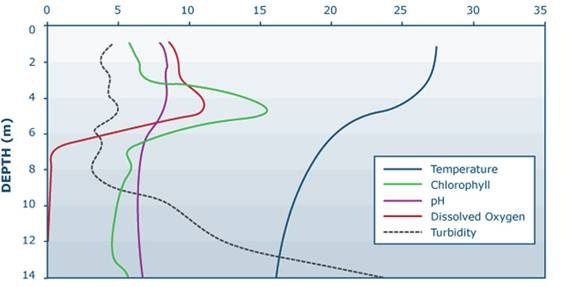Lake Sensors
Introduction to Lake Sensors
Kevin Rose | Miami University
A sensor is a device that responds to a certain parameter by producing a repeatable signal that can be read and interpreted by an observer or electronic equipment. Sensors are used in the context of lake science to measure many environmental characteristics that may assist in drawing conclusions about water quality and ecologically important parameters. Sensors are generally categorized by what kind of parameter they measure. A sensor can measure physical, chemical, or biological qualities of water, or they can assess the surrounding meteorological conditions.
While it is easy to separate sensors by the types of parameters they measure, they are often combined into multi-sensor units to develop a more complete picture of how parameters interact and how lake ecosystems function.

Using a combination of physical, chemical, biological, and meteorological sensors it is possible to develop a more complete understanding of lakes and how they function. For example, data from a reservoir in central Ohio use physical sensors, for parameters such as temperature and turbidity, chemical sensors, such as ones for dissolved oxygen and pH, and biological sensors such as a chlorophyll sensor. In addition, meteorological sensors (data not shown) are also used to understand how lakes and water quality are affected by factors such as precipitation and air temperature.









